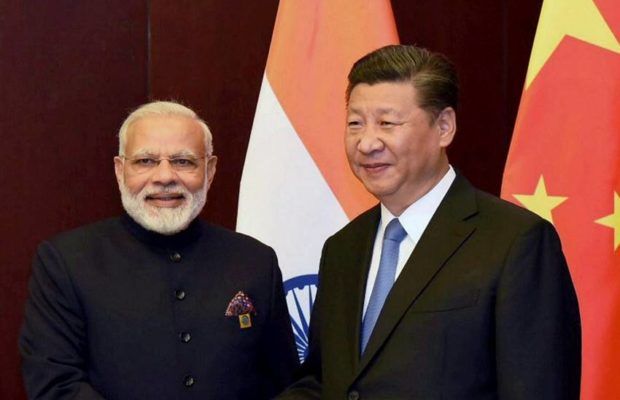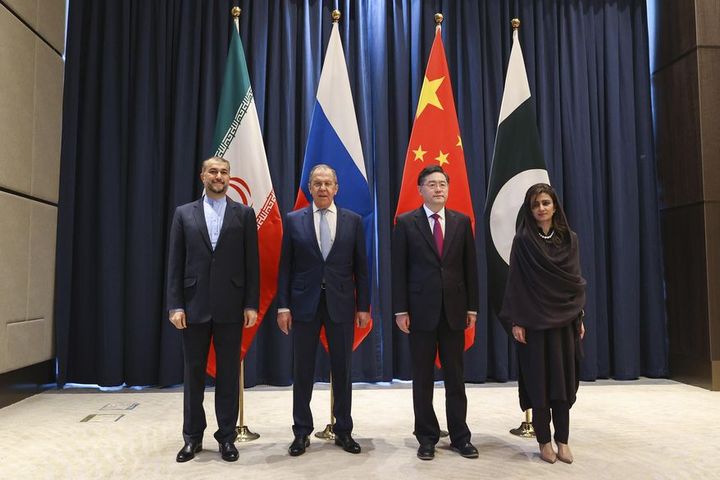China's Consul-General in Mumbai Urges for Balanced Trade

The Lede: Kong Xianhua, China’s Consul-General in Mumbai said the country is “keen to promote a balanced trade with India,” in times when China is importing over $2 trillion worth of merchandise from across the globe, with India only accountable for $30 billion.
What we know:
- Kong Xianhua made remarks during an interactive session organized by MVIRDC World Trade Centre Mumbai where Chairman Vijay Kalantri also pointed to the need for facilitating Indian exports to China.
- India's exports to China saw a decrease from $28.1 billion to $17.48 billion, [in what timeframe?] despite an increase in imports. This has led to a 45% surge in the trade imbalance between the two countries, with the gap widening from $69.4 billion to $101.02 billion in 2021, according to the Indian newspaper Business World and based on figures from the General Administration of Customs (GAC) of Beijing from January 2023.
- Vijay Kalantri further explained that if we add unofficial imports to the official trade deficit with China, which is already more than $100 billion, then the number would go up to $150 billion. The reason is that many Chinese goods destined for India are channeled through other Asian locations, including Dubai, Nepal, Sri Lanka, and others.
The background: This news comes at a time when India is trying to strike a balance between enhancing trade relations with China and bolstering its ties with Western nations. India has historically been a strong proponent of protectionism, with its policies reflecting a desire to safeguard local industries and protect jobs. This has led to the implementation of various measures, such as high tariffs, import quotas, and restrictions on foreign investment, aimed at reducing the country's reliance on imported goods and services. But the Wall Street Journal reported in March that India is now taking a major shift by reaching for closer security cooperation with Australia, Japan, and the U.S. through the Quad and pivoting its trade policies. Despite maintaining high MFN (most-favored-nation) tariffs, India has started negotiations to lower tariffs, quotas, and other trade barriers with selected partners since 2021 – different from a traditional model of free trade. Last year, the country signed free trade agreements with the United Arab Emirates and Australia, marking the first such agreements in a decade, according to the Wall Street Journal.
India-China relations have been characterized by tensions and conflict over several decades. The two countries fought a border war in 1962, which India lost, and the border disputes have remained unresolved since then, leading to occasional clashes and standoffs. Even today, the risk of escalation is still there. India has been attempting to address its trade deficit with China since 2020, following border disputes along a contested frontier. However, these efforts have yielded little success as China remains a significant and affordable supplier of goods such as active pharmaceutical ingredients, electrical equipment, and various chemicals. In January Reuters reported according to two government officials and an industry source, that policymakers in India are contemplating implementing various tariffs and non-tariff measures to limit the import of non-essential consumer and electronic goods, including those from China.
Meanwhile, the two neighbors seemed to have found a common ground with Russia, driving its oil sales amid Western sanctions and raising geopolitical tensions. For China and India, buying cheap oil from Russia offers both economic and political advantages, allowing them to diversify their oil supplies for national security reasons. It has been driving a growing opinion that China, India and Russia might be set to form a separate bloc in the East, as Diplomat recently reported.
Likely outcomes/Takeaway:
- Given the existing deficit, geopolitical turmoil and historically hostile China-India relations reaching a balanced trade between neighboring nations might be a challenge. The recent negotiations to reduce tariffs, quotas, and other barriers with selected partners could be a step forward for India, but so far it doesn’t seem that China is one of those nations.
- China's significance as a major supplier of affordable goods, including essential and non-essential consumer and electronic goods, has made it difficult for India to reduce its reliance on Chinese imports. The border disputes and occasional clashes between the two nations have added to the already strained relations between them. These factors make it difficult to envisage a scenario in which China becomes one of India's selected partners to reduce trade barriers.
- China has a history of using economic power as a political tool, which could further complicate India's efforts to balance its trade with China. The Chinese government has been known to impose trade restrictions on countries with whom it has political differences, as seen in the ongoing trade war with the United States.
Quotables:
- “Indian companies should look at the Chinese market seriously by creating awareness about their local brands in the Chinese market. I invite Indian entrepreneurs to visit China and identify potential buyers for their products.” – Kong Xianhua, China’s Consul-General in Mumbai.
- "Diplomatically, we have been very clear. We have been very clear with the Chinese that we will not tolerate any unilaterally change to the Line of Actual Control. And that so long as they continue to seek to do that, and if they have built up forces, which in our minds constitute a serious concern in the border areas, then our relationship is not normal.” – External Affairs Minister S Jaishankar in December.
Good Reads:
India, Wary of China, Expands Trade Ties With the West (WSJ)
India plans measures to curb Chinese imports as trade gap concerns mount -sources (Reuters)
India’s imports from China reach record high in 2022, trade deficit surges beyond $100 billion (The Hindu)



